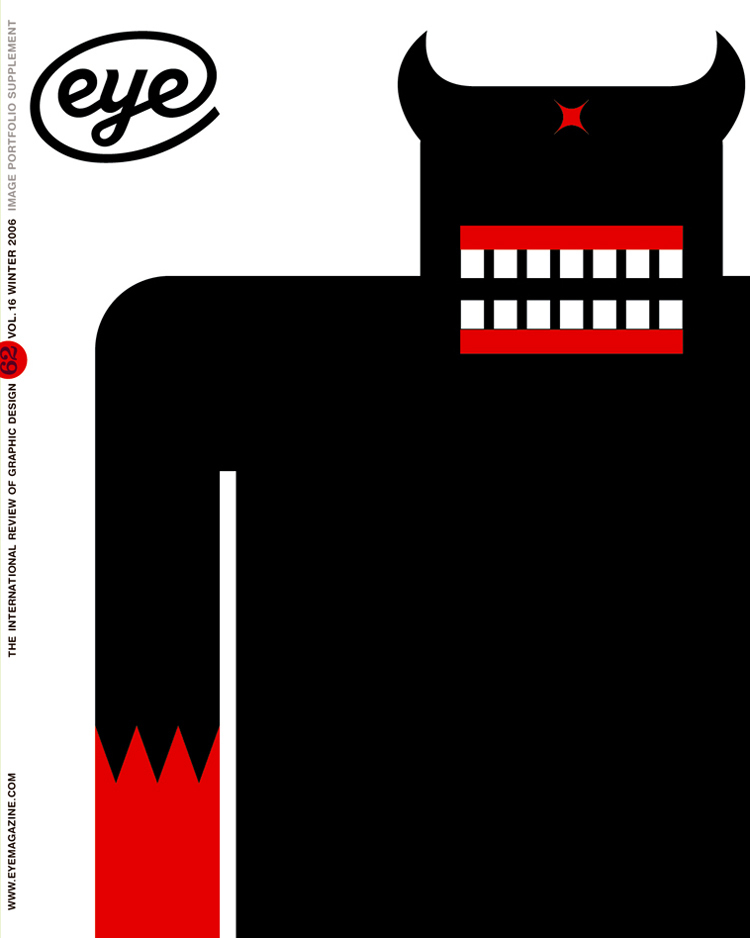Winter 2006
The wrong browsers
Jan Tschichold, Designer: The Penguin Years
Richard B. Doubleday Oak Knoll Press & Lund Humphries, £25It gives me no pleasure to say that this is a truly dreadful book that leaves none of those involved with any credit whatsoever. It fails to give any new insight into Jan Tschichold’s time at Penguin Books; it shows no evidence of having been proof-read; it is riddled with factual errors; the colour photography, balance and reproduction is poor; and the design – despite bold claims to be based on Tschichold’s Penguin’s Composition Rules – bears little relationship to his work.
In terms of scholarship, reading the first paragraph of the blurb on the inside of the front dustjacket sets the tone for everything that follows: ‘Shortly after the Second World War, and following the success of its paperback rebranding, Penguin Books made the bold decision to completely redesign its publications. Their subsequent choice of designer would not only lead to the creation of an iconic brand but also lead to a revolution in typographic conventions.’
But there was no ‘rebranding’ after the Second World War, simply the realisation that standards had slipped and the desire to improve them. ‘Completely redesign’ is too strong: Penguin was already an iconic brand, and ‘rediscovery’ or ‘re-evaluation’ would be more precise than ‘revolution’. And so it goes on. Nearly every page has similar over-simplifications that lead to ambiguity or inaccuracy.
The book has been published using what looks more like a first draft rather than a final manuscript. It is marred by misspellings, a curious use of capitalisation (Monotype with lowercase ‘m’ in nearly all typeface names for instance), and flowery adjectives where keen observation would be better. Typefaces are ‘classic vintage’ (Scotch Roman fig.57); Perpetua is ‘expressive’ (fig.62) and ‘lyrical’ (fig.108), Bembo is ‘discrete’ (fig.65); Bell ‘dainty’ (fig.75); Poliphilus ‘adaptable’ (figs.82-83); Incorrect attributions include Bembo fig.61 & 108 (should be Perpetua); Caslon figs 76-77 (Caslon & Garamond); and the calligraphic logo from 1950 was by Elizabeth Friedlander not Schmoller.
What Tschichold did for Penguin was to raise the level of text typography through his patient and persistent haranguing of printers across the country, and his insistence upon a way of doing things which was far more systematic than anything most of them were used to. The fact that Penguin used printers throughout the country meant that those ideas were then spread far more widely that he may have thought at the outset. Because this aspect of his work is so important, it is a great disappointment that more text pages are not shown and their details analysed. The examples which are shown are single pages not spreads, and are reproduced as line which, on the unforgiving art paper, does them few favours.
Doubleday does not show previous cover designs, which is a great pity as Tschichold’s redesigns differed greatly in their extent. The Shakespeare and Poetry series were poor before Tschichold and needed a complete makeover, seeing the extent of that transformation would help Penguin newcomers. For other series, for example the Classics, all the elements were already present, right down to the typeface (Perpetua Titling), but this is played down and the earlier good work (in difficult circumstances) by Edward Young, John Overton and others is overlooked.
The book is a lesson in how to get design and production values seriously wrong. Much is made of Tschichold’s work, but he would turn in his grave if he could see this. A dedication to him and his typeface Sabon appears on page six in caps and small caps poorly spaced and leaded. Elsewhere, the treatment of text typography is likewise ignorant of Tschichold. The paper – another Tschichold bugbear – is a bright white art paper which could only be excused if images predominate, but they don’t. The book has 218 pages of which only 77 are image-only. The remainder (including 66 pages of appendices and a Tschichold publication list) are text pages, and the contrast is unpleasant. The colour reproductions are a let-down, with many looking as though they have not been corrected in any way. Worse still, all covers are framed with keylines which detract. Several line illustrations are clearly from other publications but they are not acknowledged.
It would be possible to look at Tschichold’s Penguin period quite critically and see the perfect traditionalism it embodied as being at odds with both the progressive thinking happening in British society at large, and with the designs used by Penguin’s competitors in the changed postwar situation. This book does not engage with those debates but restricts itself to describing, in rather reverential terms, what Tschichold did for Penguin. In doing so it contributes little to the published literature on the subject, but if it did this well, in terms of its scholarship, editing, design and image selection, it could be recommended to a new generation of readers as a first step in understanding a key moment in British publishing history. That it is so poor in all those aspects is little short of a disgrace, which reflects badly on everyone concerned. Everyone makes mistakes, but so many, by so many people in one book is unforgivable.
Phil Baines, designer & writer, Professor of Typography at Central Saint Martins
First published in Eye no. 62 vol. 16 2006
Eye is the world’s most beautiful and collectable graphic design journal, published for professional designers, students and anyone interested in critical, informed writing about graphic design and visual culture. It is available from all good design bookshops and online at the Eye shop, where you can buy subscriptions and single issues.

